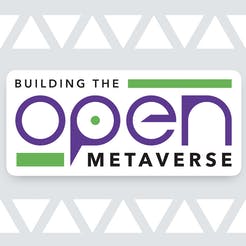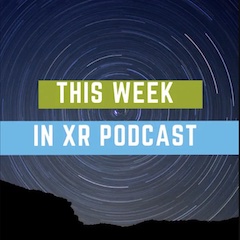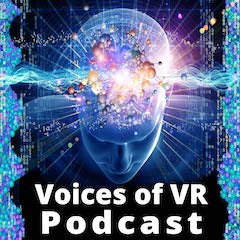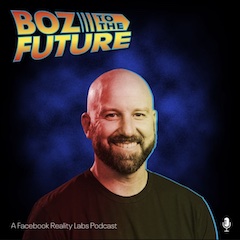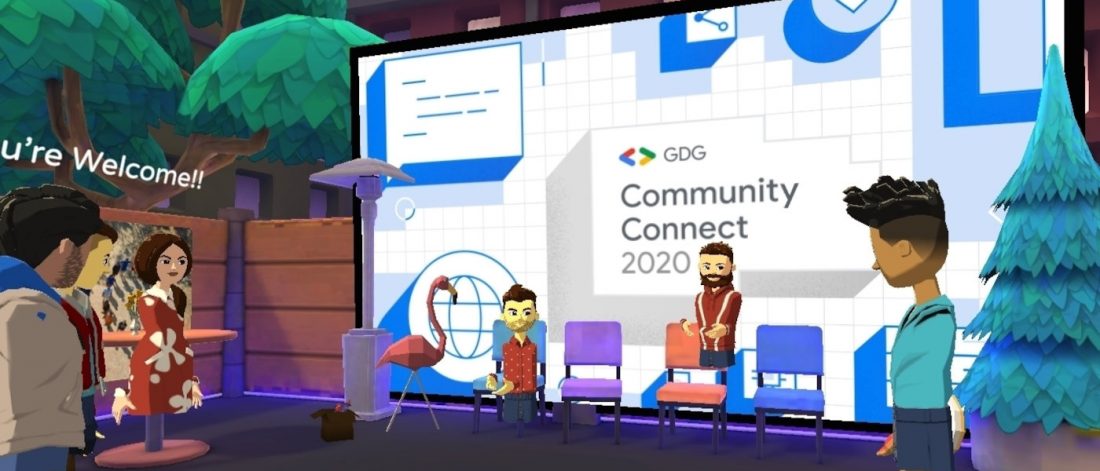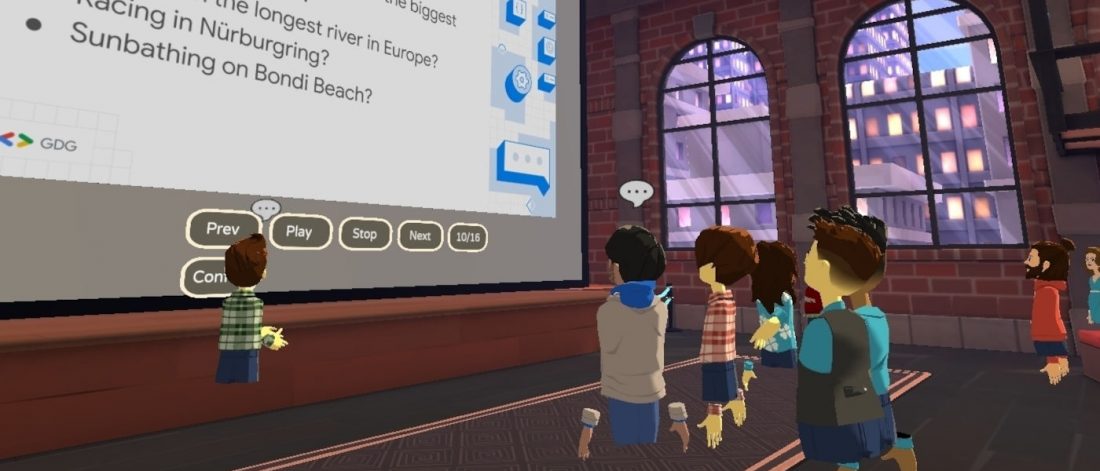You’re excited to organize your next community event in Virtual Reality. You know the reasons for doing it, but you don’t know how to do it. In this post, I’ll list the key principles to keep in mind while organizing a VR community event.
Explore, test, iterate
VR is still a very new medium. Community builders need time to understand its peculiarities, and how they can serve their communities. Especially at the beginning, it won’t be all rainbows and unicorns, and getting everything right at the first attempt is quite rare. Instead, exploring, testing and iterating is my best recipe for success.
Luckily, VR shares many of the social dynamics happening during in-person activities, so figuring our how a community experience can be doesn’t require to start from scratch. Nevertheless, it’s a new medium. Best practices are shaped and refined constantly, platforms evolve, what other community builders are doing today heavily influences what others will do tomorrow.
This is why the way I suggest to understand how VR works is to get hands dirty and explore events organized by others. Being a curious community builder allows to learn about the platform(s) UX, to collect ideas, discover common behavioral patterns, take notes on how the space is built and arranged, notice how communities express themselves in VR… To learn from others!
While the VR-awareness is built, it’s useful to put it under test using the lens of the community event to be organized. Immediately, without waiting to have the full big picture in mind on how everything should look like. Iteratively, because modeling a community event in virtual reality requires to take care both of the content, and the (virtual) environment when it happens. Finding the right synergies between the two, inside of a new medium, cannot use something different than an iterative approach.
Follow (almost) the same rules for organizing an in-person event
It’s astonishing how much people’s behavioral expectations overlap between real life and virtual reality scenarios. Circles are naturally formed while a group is chatting. If a circle is small and tight, there is an uncomfortable feeling to break it (so, Pac-Man rule is still valid). Before a person disconnects, they generally goes around to say goodbye to other attendees. If someone is close (maybe waiting in a queue), it’s quite natural, and accepted, to break the silence and start talking.
The direct consequence is that best practices for organizing an in-person community event apply also to a community event in virtual reality. From having spaces to take selfie together, to reserving time for unstructured networking opportunities (yep, they work very well in VR). From welcoming new community members, to pay specific attention for attendees that joined in VR for the first time. From having a prominent and visible stage to keep attendees engaged with the speaker(s), to a decent volume of background music, not too loud to cover people’s conversations, but audible enough to characterize the space with a positive mood.
There is already a lot of material available, and I suggest to take a look to The Art of Gathering book.
Why does this happen? Because VR is truly immersive, and we feel we’re really somewhere, body and mind.
Carefully pick-up a platform
In real life, there are many interchangeable places where a community can host its events. In virtual reality, the different platforms play a crucial role in the final experience offered to community members. Potentially, all of them can host a community event. In reality, a lot depends on the purposes for the meeting. It’s an intimate meetup? It’s important to leverage the network effect of the platform to acquire new members? It has to be a fun moment? The main goal is to be productive and move forward in a community project, or to share knowledge? There are specific platforms for each one of the listed objectives, and I’m sure more will come in the future.
In addition to specific use cases that each platform focuses on (or doesn’t), there are also technical aspects to consider. For example, how many people the event could host (>10 / 50 / 200 / 1000+)? Recording and sharing afterward is important? What level of space customization is required (total terraforming, changes some details of pre-defined environments, ability to do it only inside VR vs importing from external tools like Unity)? How much the avatar can be adapted to members’ preferences (heavily customizable in every aspect, clothes included, vs standard and coherent, more photo-realistic vs cartoonesque, etc)?
Finally, it’s important to take into account the platform transition cost. Each user has preferences, and it won’t be easy to move community members from one platform to another. New accounts, new UI and UX, different supported hardware, etc. With the due exceptions, it’s important to choose from the beginning a platform “to partner with”, and try to stick to it as much as possible, to build the user base over time. Among the exceptions, a community of pioneers, that makes the “experimenting with what’s new” its reason to exist, or meeting for once somewhere else, as a kind of “VR roadtrip experience” offered to the community members.
This is where someone with virtual reality experience can really help, saving a lot of time while matching the community goals and habits, with the right platform to fulfill them.
Keep building the community identity
A common identity, and shared experiences, we know, are among the cornerstones that build a sense of community. Customizing the VR space, to make it able to narrate the community identity and bring out these shared memories, is a crucial element for running a successful community event in virtual reality.
There are two senses that could be leveraged in VR nowadays: sight and sound. If the community already has past experiences in real life, it’s fine (and suggested) to create a continuum between these past experiences and the current VR setup. Placing pictures of past events somewhere in the VR space works really well. Recreating in VR known places, where the community had meaningful experiences is even better, at the cost of more effort. If there are physical routines the community is used to (for example singing a hymn, saying particular sentences, use specific objects, etc) it’s a good idea to translate them in their VR counterparts. Music or songs that are connected with community memories could be used as background music. If the avatar’s clothes can be customized, why not creating a VR community t-shirt, and ask event attendees to wear it?
If identity and past experiences are connected with other senses (taste, smell or touch), it could be useful to place in the VR environment objects that can be used as a proxy for them. It’s (still) impossible to reproduce the taste of a food, but using a 3D object could recall the memory associated with the taste, and the experience around it. The same for a particular odor, where maybe the specific shape of the dispenser, or the object that generated it, could work as a good proxy.
Put accessibility at the center
Unless the community is VR-focused, chances are low its members have the necessary gears to properly experience a VR event, like a standalone headset or a PCVR. In addition, there are people that suffer from motion sickness, so cannot really use a headset. While planning a community event in virtual reality, it’s core to make the event as much accessible as possible, examining entrance barriers and friction points, and dedicate time and effort to lower them down.
For example, there are platforms that offer 2D clients, to participate in the VR experience from a desktop PC, or even a mobile phone. The price to pay is losing some non verbal communication elements, like head nodding, hands movement, eye tracking, etc. But more people will be able to participate and build common memories, reinforce their sense of community.
It is also important to dedicate some time to “onboard” people to the platform. Despite several tutorials focused on how to use the app, platform controls, etc, we all know people don’t often read manuals. My suggestion is to organize a video call on a quick intro session to VR, to align event attendees to a few standard concepts. This learning moment will also be useful to do hardware checks, like a working mic, make people used to platform controls, give them a glance of what to expect, fix errors in installing the app / 2D client, and will avoid spending time to fix problem while in VR, delaying or even ruining the experience of the attendees. Over time, more experienced members can run these crash-courses into VR, as an occasion to give back to the community.
Like this:
Like Loading...
